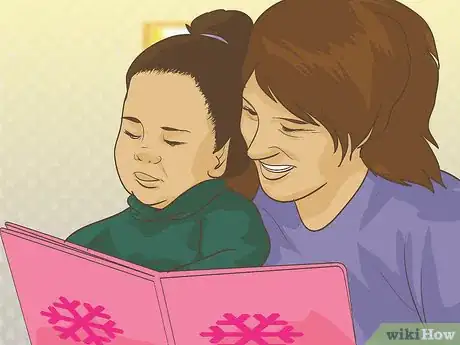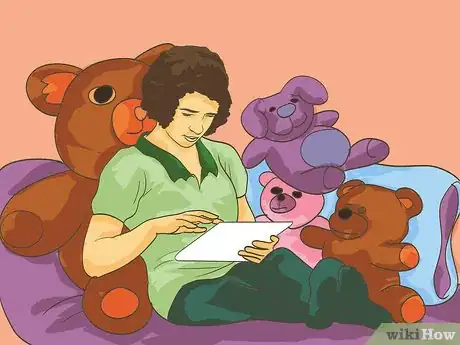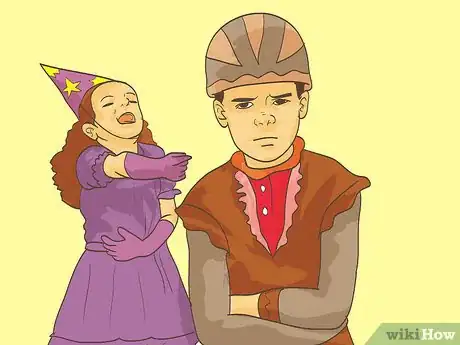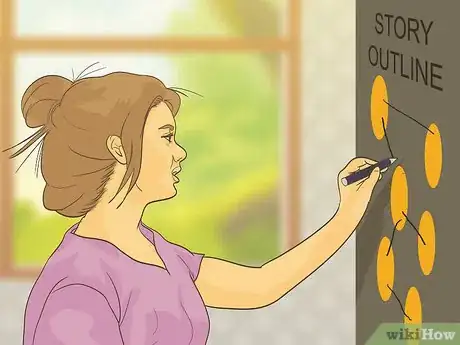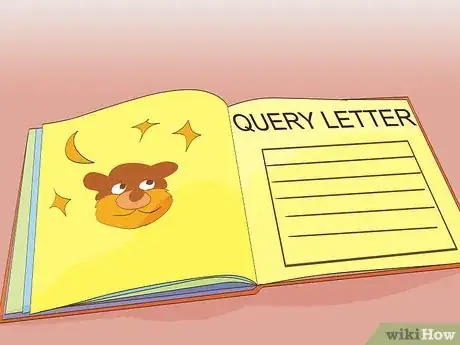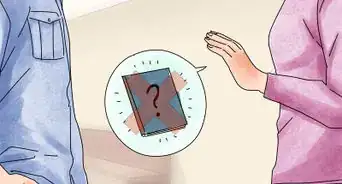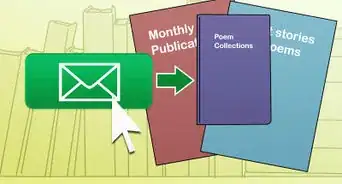This article was co-authored by Grant Faulkner, MA. Grant Faulkner is the Executive Director of National Novel Writing Month (NaNoWriMo) and the co-founder of 100 Word Story, a literary magazine. Grant has published two books on writing and has been published in The New York Times and Writer’s Digest. He co-hosts Write-minded, a weekly podcast on writing and publishing, and has a M.A. in Creative Writing from San Francisco State University.
There are 12 references cited in this article, which can be found at the bottom of the page.
This article has been viewed 34,913 times.
Bedtime stories are a classic genre of children’s literature. Magical tales of talking animals or floating fairies can take children away into a restful, dream-filled slumber. Whether you are writing a story for someone you love, or you hope to find a publisher to share your story with the world, you need to figure out a few things before you write your own bedtime story. Deciding on a theme, characters, and plot before you begin to write will make your story more complete, and understanding the basics of bedtime stories will make yours successful.[1]
Steps
Understanding the Hallmarks of Bedtime Stories
-
1Remember the goal of a bedtime story. You want the story to capture the child’s attention, but you also want to have the child drift into dreamland at the end of it. Consequently, you will want to avoid violence, death, blood, and gore.
- The ending should be satisfying and leave the main character in a happy place.
- Many bedtime stories end with a main character hugging a caregiver or expressing, “I love you.” This is a great way to send a child off to sleep.[2]
-
2Keep the text simple but descriptive. You want to engage the child and capture their imagination, but you don’t want them to have to expend too much brain power following the story. It’s a tricky skill to create vivid stories with simple language, but with practice you will be able to achieve this.Advertisement
-
3Teach a lesson. Many classic bedtime stories end with the main character learning a valuable lesson or moral. Try to incorporate this into your tale as well, but write it in a way that is organic, not preachy.[3]
- It helps if a character can figure out the moral of the story on their own without being told it by an adult.
- For example, the main character can learn the value of hard work by succeeding in a task in your story. This will be much better received by the child than including an adult stating, “Work hard and you will do well on your test,” for instance.
-
4Pay attention to the length of your story. Between 8 and 10 minutes is a good length for a bedtime story. It gives the children enough time to settle down and relax, but it doesn’t keep them up too long.[4]
- Very young children may benefit from even shorter stories, those that take around five minutes to read.
Preparing to Write
-
1Read as many bedtime stories as possible.[5] Attempt to read all kinds of bedtime stories, from classics to newly published ones. You will get a feel for the types of themes they convey, as well as how the language and rhythm is constructed.
- Also, make it a habit to visit bookstores and libraries to see the variety of children’s books available.
-
2Identify your audience. Think about whether you will be writing for younger readers, aged 2 to 6, or those a bit older, aged 7 to 11. Your audience will determine the vocabulary and sentence structure you use in your story. It will also help you identify the types of characters to incorporate.[6]
- Younger children will be more open to characters like talking animals and dragons, while older readers could possibly prefer pirates, spies, etc.
- By getting into the mind of a child, you will be able to create appealing characters and situations that the child can emotionally identify with.
-
3Start or join a writing group. Surrounding yourself with other writers is a great way to strengthen your own writing and stories.[7] Members of a writing group can critique your work, offer suggestions and encouragement, and help keep you accountable to a writing schedule.
- Websites are a good way to research writers’ groups in your area. The Writers and Editors Website, for instance, offers a way to search for writing groups in your area.
- Writing groups can be specialized regarding subject matter, like children’s literature, or be regionally based.
Brainstorming and Character Development
-
1Be imaginative. Children's stories are not bound by the constraints of realism. They are designed to transport young minds to new places and guide them into dreams. You can be as wild and magical as your 6-year-old self wants to be.
-
2Pick a topic or theme relatable to kids. Make sure that the story is one that the child will be interested in reading. Children have to be able to identify with the characters and envision themselves in the story.[8]
- Try to keep it light-hearted and based around something interesting or unusual.
-
3Create unique, identifiable main characters. Think about the motivations for those characters, both the protagonist and the supporting characters.
- Your main character, or protagonist, drives the story. They will need to overcome obstacles and possibly transform a character trait before the end of the story.[9]
- Another important character will be the antagonist, or foil, to your protagonist. They don’t have to be a villain, they just need to offer a counterpoint to your main character.[10]
- Too many characters may be distracting and confusing.
-
4Make a small storyboard or outline. Both an outline and a storyboard offer a way for you to organize your story before you put pen to paper. You can sketch out the beginning, middle, and end of your story, as well as make a list of the primary characters. Doing this vital step will help you create a story that includes all of the necessary elements.[11]
- An example would be something like this: Happy beginning, where everything is fine. An evil person does something bad (like stealing or breaking something). The main character searches for and catches the villain. The main character is rewarded and lives happily ever after.
- The typical plot formula has been around since the time of the Greeks and is as follows: introduction of characters, conflict, increased action, climax, and resolution. Remember these when crafting your outline.[12]
Writing Your Story
-
1Make a writing schedule. You will not be able to write a successful bedtime story overnight. By carving out a dedicated time to work on your story, you will be able to prioritize your work and finish by your deadline.[13] Try writing at a specific time each day, whether that be first thing in the morning or after dinner each night.[14]
- If you are involved in a writing group, this will help you stay on track with your deadlines. You’ll be able to feel accountable to your group to share your latest revisions with them.
-
2Begin to write. Take your outline and character development ideas and start to craft your story. You can do this via computer or by utilizing a pen and paper.
- Be realistic about how long it will take you to write a good story. It can take up to a year.[15]
- Carry a notebook with you so you can jot down ideas if you are away from home.
-
3Find an illustrator to help bring your story to life if you are not an artist. Pictures can be what make a story most attractive for children. Even young children can understand aspects of the story by viewing the artwork.
- If you plan to submit your story to publishers, the publisher will hire the illustrator for you.[16]
-
4Revise your story. Once you’ve completed a first draft of your story, step away from it for a while. Then, come back and re-read it, with a critical eye toward deciding whether it is interesting and whether the characters are engaging. Make changes as necessary.
-
5Read your story out loud. Most bedtime stories are read to children by adults. By reading your story aloud, you will begin to see whether the printed words translate well to being conveyed audibly.
-
6Solicit feedback. If you have joined a writer’s group, take your story to your next meeting. Your fellow authors will be able to offer valuable suggestions for improving the flow or themes of your story.[17]
- If you aren’t in a writing group, you can ask for feedback from friends and family.
- Children would be a great group to offer feedback. If you have no children of your own, ask a local school or library if you can read your story there.
-
7Make changes based on the feedback. Even the best stories can be continually honed and improved. Approach the feedback and critiques you have received with an open mind, and incorporate the useful information into the next iteration of your story.
Publishing Your Story
-
1Identify publishers who print bedtime stories. The Children’s Book Council is a nonprofit trade group of children’s book publishers in North America. Their Website has a list of publishers and information on the audiences and genres of the books they publish.
- The Society of Children’s Book Writers and Illustrators also has information about publishers of children’s literature.[18]
- You can also find out who published children’s books you enjoyed reading at the library or bookstore.
-
2Submit your manuscript professionally. When you’ve identified potential publishers, read their submission guidelines and follow them specifically and completely. The easiest way to get your manuscript rejected is to haphazardly submit your work and not follow the guidelines.
- Some publishers may only want an outline or a few chapters, while others may want the full manuscript.
- You can call the receptionists at the publishing houses to confirm whether specific editors are still on staff.[19]
-
3Include a query letter with your manuscript. A well-written query letter serves as a pitch for your book. You should include information on target audience, page length, and your experience, as well as a brief introduction explaining why your story is different.[20]
-
4Be realistic. Once you have written your bedtime story, you may be convinced it needs to be shared with children everywhere. That may be the case, but remember that editors receive more manuscripts for children’s picture books than for any other type of book.[21]
Expert Q&A
-
QuestionHow do you tell an amazing children's story?
 Grant Faulkner, MAGrant Faulkner is the Executive Director of National Novel Writing Month (NaNoWriMo) and the co-founder of 100 Word Story, a literary magazine. Grant has published two books on writing and has been published in The New York Times and Writer’s Digest. He co-hosts Write-minded, a weekly podcast on writing and publishing, and has a M.A. in Creative Writing from San Francisco State University.
Grant Faulkner, MAGrant Faulkner is the Executive Director of National Novel Writing Month (NaNoWriMo) and the co-founder of 100 Word Story, a literary magazine. Grant has published two books on writing and has been published in The New York Times and Writer’s Digest. He co-hosts Write-minded, a weekly podcast on writing and publishing, and has a M.A. in Creative Writing from San Francisco State University.
Professional Writer Read other children’s books as well. The more you familiarize yourself with children’s literature, the more prepared you’ll be when you write your own story.
Read other children’s books as well. The more you familiarize yourself with children’s literature, the more prepared you’ll be when you write your own story. -
QuestionHow can I develop a theme or moral for my bedtime story?
 Grant Faulkner, MAGrant Faulkner is the Executive Director of National Novel Writing Month (NaNoWriMo) and the co-founder of 100 Word Story, a literary magazine. Grant has published two books on writing and has been published in The New York Times and Writer’s Digest. He co-hosts Write-minded, a weekly podcast on writing and publishing, and has a M.A. in Creative Writing from San Francisco State University.
Grant Faulkner, MAGrant Faulkner is the Executive Director of National Novel Writing Month (NaNoWriMo) and the co-founder of 100 Word Story, a literary magazine. Grant has published two books on writing and has been published in The New York Times and Writer’s Digest. He co-hosts Write-minded, a weekly podcast on writing and publishing, and has a M.A. in Creative Writing from San Francisco State University.
Professional Writer I think the best themes emerge from the story naturally. They're not grafted onto the story. Try to explore and identify themes as you write it.
I think the best themes emerge from the story naturally. They're not grafted onto the story. Try to explore and identify themes as you write it. -
QuestionHow many days will it take for the publishers to reply?
 Community AnswerThere is no set time. It could take a few days to a few months. It is best to simply be patient.
Community AnswerThere is no set time. It could take a few days to a few months. It is best to simply be patient.
References
- ↑ Grant Faulkner, MA. Professional Writer. Expert Interview. 8 January 2019.
- ↑ http://www.darcypattison.com/picture-books/bedtime-story/
- ↑ http://www.today.com/parents/want-write-good-children-s-book-here-are-7-tips-t85831
- ↑ http://www.telegraph.co.uk/news/health/children/11828048/The-secrets-of-the-perfect-bedtime-story-revealed.html
- ↑ Grant Faulkner, MA. Professional Writer. Expert Interview. 8 January 2019.
- ↑ http://www.today.com/parents/want-write-good-children-s-book-here-are-7-tips-t85831
- ↑ Grant Faulkner, MA. Professional Writer. Expert Interview. 8 January 2019.
- ↑ http://www.today.com/parents/want-write-good-children-s-book-here-are-7-tips-t85831,
- ↑ http://www.adventuresinyapublishing.com/2011/10/seven-character-types-that-build-your.html
- ↑ http://www.adventuresinyapublishing.com/2011/10/seven-character-types-that-build-your.html
- ↑ http://www.darcypattison.com/picture-books/bedtime-story/
- ↑ http://www.writingrhymeandmeter.com/story/the-traditional-plot-plotting-character-setting-rising-action-climax-resolution-conflict-character-flaw-internal-external-conflict-rhymeweaver-lane-fredrickson/
- ↑ http://www.patmora.com/tips/
- ↑ Grant Faulkner, MA. Professional Writer. Expert Interview. 8 January 2019.
- ↑ http://www.today.com/parents/want-write-good-children-s-book-here-are-7-tips-t85831
- ↑ http://www.hireanillustrator.com/i/blog/1033/hiring-a-childrens-book-illustrator/
- ↑ Grant Faulkner, MA. Professional Writer. Expert Interview. 8 January 2019.
- ↑ http://www.scbwi.org/
- ↑ http://www.scbwi.org/
- ↑ http://www.scbwi.org/
- ↑ http://www.today.com/parents/want-write-good-children-s-book-here-are-7-tips-t85831
- ↑ http://www.darcypattison.com/picture-books/bedtime-story/
- ↑ http://www.scbwi.org/about/mission/
About This Article
If you want to write a bedtime story, create a plot that is imaginative and full of wonder, with unique main characters and a plot that children can relate to. You may even want to find an illustrator to create pictures for your story to help bring it to life. Try to keep the length short, so the story can be read in about 8-10 minutes, and avoid too much violence or blood, which may keep a child from being able to sleep. Instead, opt for a happy ending, with someone saying “I love you” or something similar. Keep reading to learn how to create a daily writing schedule to help you craft your bedtime story!




